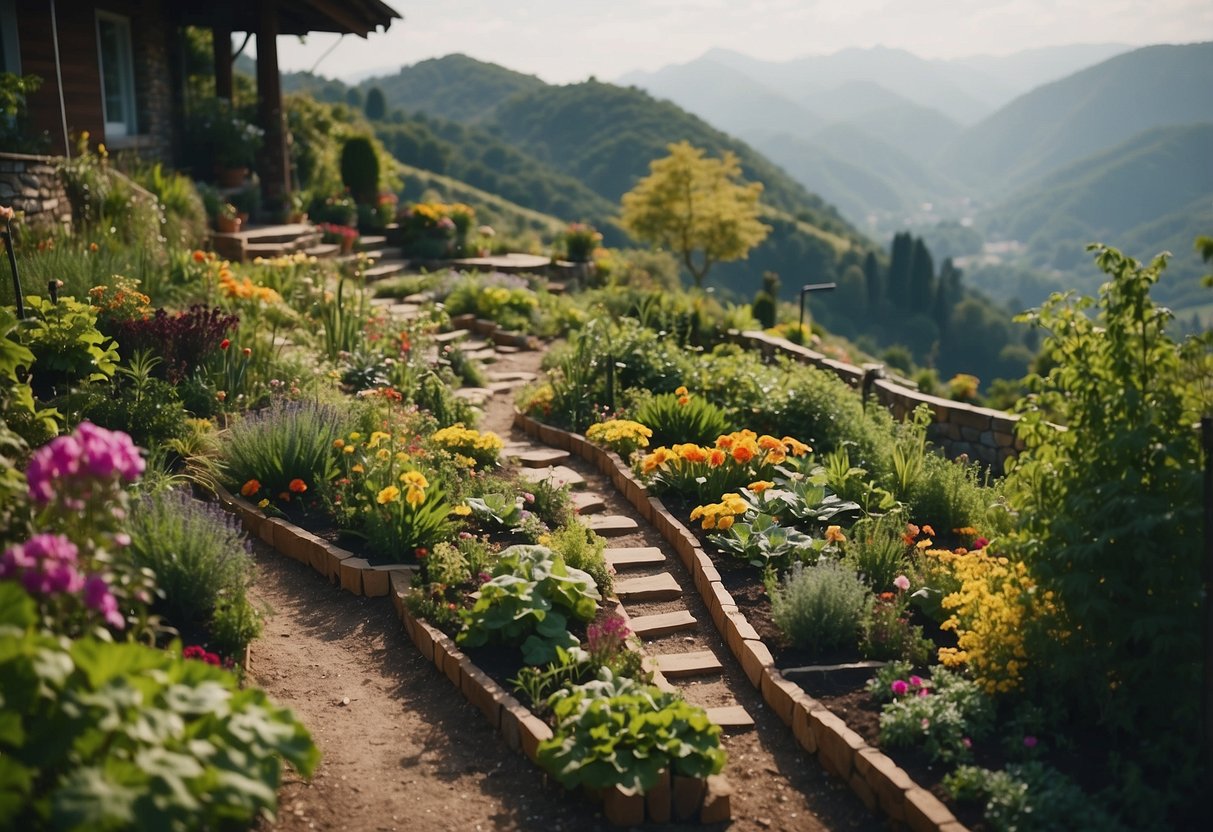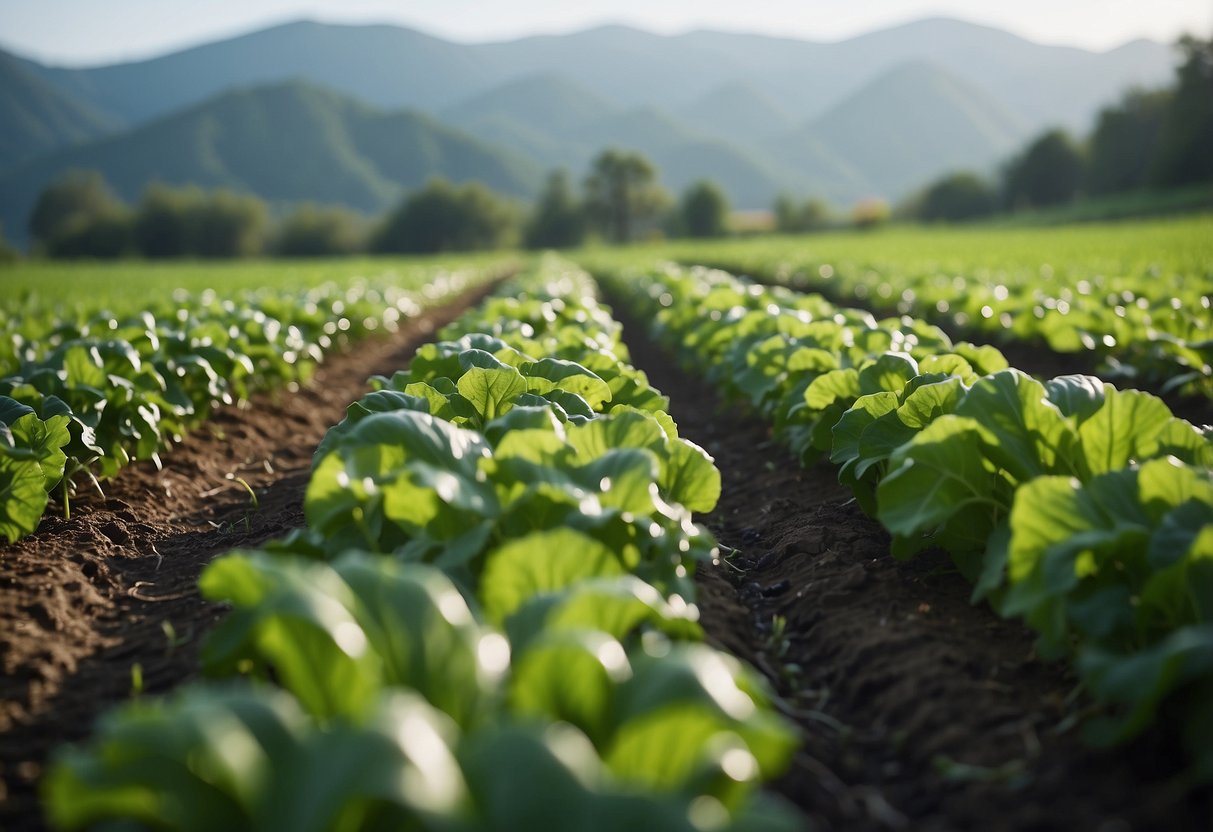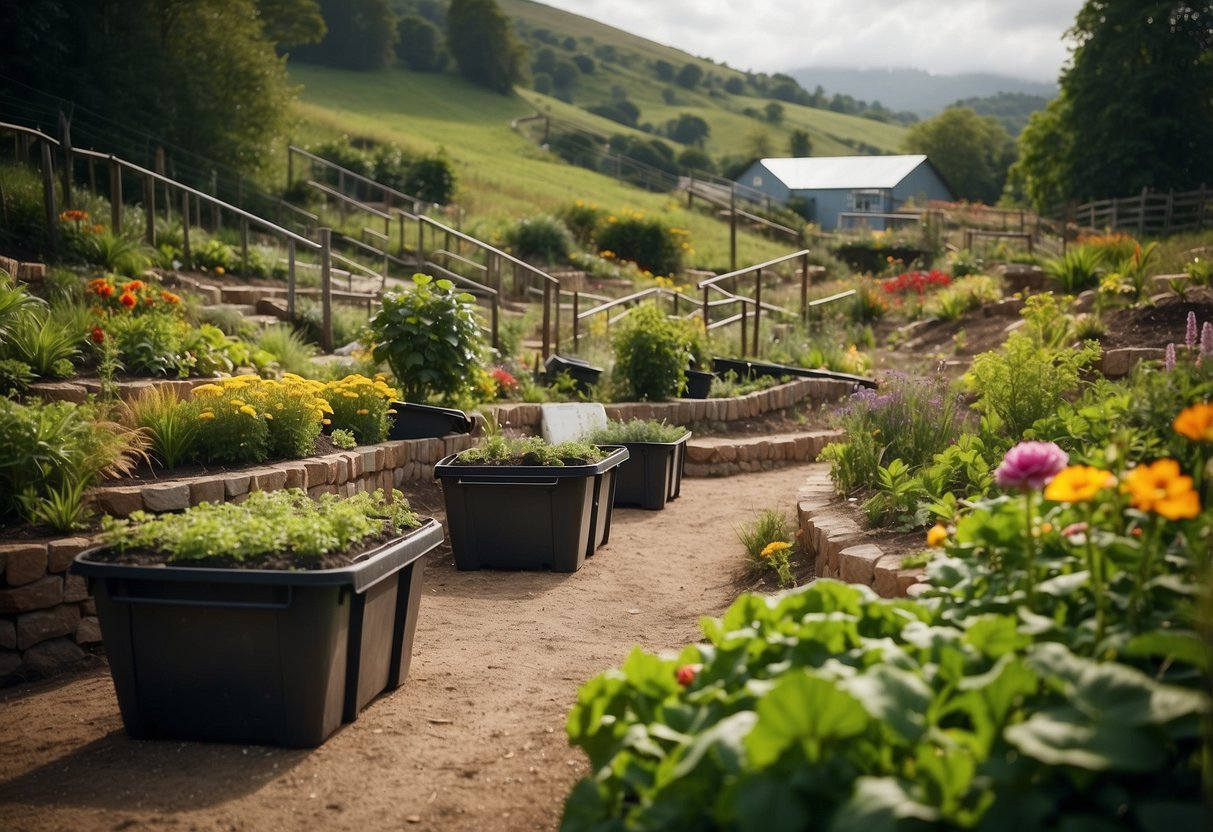Hillside Vegetable Garden Ideas: Creative Tips for Sloped Spaces
Creating a vegetable garden on a hillside can be both a rewarding and challenging project. The unique landscape offers opportunities to design a beautiful and functional garden space. How can you transform your sloped yard into a thriving vegetable garden?

You’ll discover that with the right techniques and a touch of creativity, your hillside can become a productive haven for growing fresh vegetables. From terracing to using raised beds, there are many strategies to explore.
1) Build Terraced Beds

Building terraced beds is a great way to stabilize a sloped garden. By having beds run across the slope, you can prevent soil erosion and water runoff. This makes it easier to plant and maintain your vegetable garden.
First, draw a side view of your slope to plan out the terrace levels. Make sure each bed has a flat surface to keep plants steady. You can adjust the height of each bed to match the natural contour of the hillside. This stepped layout will help manage water flow effectively.
Make the beds with sturdy materials like wood or stone. This adds stability and durability. Ensure that each bed is well-reinforced to handle rain and other elements.
By using terraced beds, you can create a functional and beautiful vegetable garden on any hillside.
2) Incorporate Retaining Walls

Retaining walls are perfect for creating a hillside vegetable garden. They help manage soil erosion and improve drainage. This ensures your plants have the best environment to grow.
You can use different materials like stone, brick, or wood for your retaining walls. These materials add a decorative element to your garden, making it both functional and beautiful.
For ideas, consider The Spruce’s retaining wall designs or check out tips for gardening on a slope.
3) Use Raised Garden Beds

Raised garden beds are great for hillside vegetable gardens. They help prevent soil erosion and make your garden more organized.
You can use wood to create basic rectangular frames. Set them on the slope where you want to plant. Raised beds ensure the soil stays in place and makes watering easier.
Pick sunny areas on the slope for your beds. This is especially important for sun-loving vegetables. Raised beds also make it easier to control the soil quality and remove weeds.
4) Add Drip Irrigation

Drip irrigation is perfect for hillside vegetable gardens. This system delivers water directly to the roots of your plants. It helps to reduce soil erosion by using low water pressure.
You can easily control the amount of water each plant gets. This is important for sloped areas. It also conserves water, saving you money and helping the environment.
To set up, you’ll need hoses, emitters, and a timer. Gravity drip systems are great too because they don’t require electricity or pumps. Learn more about the benefits of gravity drip irrigation for hillside gardens.
5) Plant Groundcovers

Planting groundcovers on a hillside vegetable garden helps prevent soil erosion.
Choose plants like creeping phlox, rock cress, or sweet alyssum. They spread quickly and provide a lovely carpet of greenery.
Groundcovers also reduce weeds and keep the soil moist, which is great for your vegetables. Plus, they add a splash of color to your garden.
6) Construct Stone Pathways

Building stone pathways in your hillside vegetable garden adds both function and beauty. These paths let you move easily between your plants without compacting the soil.
Choose large, flat stones and place them along your desired route. Ensure they are stable and level by digging a shallow trench to set them in. Fill gaps with small pebbles for a finished look and better stability.
Stone pathways not only help with accessibility but also control erosion on slopes. This practical step makes your garden more user-friendly while enhancing its visual appeal. For more ideas, visit this resource.
7) Create a Composting Area

Creating a composting area is a great idea for your hillside vegetable garden. It lets you recycle kitchen scraps and yard waste into rich soil.
Place the compost bin in a convenient spot, close to your garden beds. Make sure it’s easy to access without walking up or down too much of the slope.
Keep your compost mix balanced with green material like vegetable scraps and brown material like dried leaves. Turn it regularly to speed up the composting process. This way, you’ll always have nutrient-rich compost ready for your plants.
8) Install Garden Lighting

Adding garden lighting to your hillside vegetable garden can make it both beautiful and functional. Lights can help you navigate paths after dark and highlight your favorite plants.
Choose weather-resistant lights that are suitable for outdoor use. Solar-powered options are eco-friendly and easy to install.
Place the lights strategically to avoid casting shadows over your plants. This way, your garden will be safely lit without blocking sunlight during the day.
9) Choose Drought-Tolerant Plants

Drought-tolerant plants are perfect for hillside vegetable gardens. They help conserve water and thrive even in dry conditions.
Consider planting vegetables like kale, peppers, and eggplant. These plants can handle less frequent watering.
Incorporate some herbs like rosemary and thyme. They not only add flavor to your dishes but also require minimal water.
10) Design Vertical Gardens

Designing vertical gardens on a hillside can be a smart way to maximize space. One idea is to add planters to a wall or fence. This can help you make better use of vertical space.
Try using pallets for your vertical garden. Close off the planting spots with wood or wire mesh. This is great for larger vegetable plants.
Understanding Hillside Vegetable Gardens

Hillside vegetable gardens offer unique benefits such as better sunlight exposure and natural drainage. However, they also bring challenges like soil erosion and difficult access, which require specific strategies to overcome.
Benefits of Hillside Gardening
Gardening on a slope can be very rewarding. One big advantage is the natural sunlight exposure. Your plants may get more light due to the angle of the slope, which can help them grow faster and healthier. Improved drainage is another bonus. Water naturally runs off, which helps prevent root rot.
Another benefit is the aesthetic appeal. A terraced garden can look very beautiful, adding character to your landscape. Terracing also helps in soil conservation. By creating flat surfaces, you prevent soil from washing away.
Challenges and Solutions
Hillside gardening does come with its set of challenges. Soil erosion is a major issue. When it rains, water can wash away valuable topsoil. To manage this, you can use terracing or plant cover crops that hold soil in place.
Accessing different parts of your garden can be tough due to the steep slope. Building pathways or steps can solve this problem. You may also face water runoff issues. Effective irrigation systems and rainwater collection can help manage water distribution efficiently.
Wind can also be stronger on a slope. Creating windbreaks with shrubs or structures can protect your plants. Adapting to these hurdles makes hillside gardening a unique but manageable venture.
Planning Your Hillside Vegetable Garden

Creating a vegetable garden on a slope requires careful consideration of which vegetables to plant, how to prepare the soil, and how to manage water flow.
Choosing the Right Vegetables
When selecting vegetables for your hillside garden, opt for plants that can thrive on a slope. Root vegetables like carrots and potatoes are great because they help hold the soil together. Herbs such as thyme and rosemary also work well due to their resilience and lower water needs.
Leafy greens like spinach and lettuce are beneficial for hillsides with partial shade, as they don’t require full sun. Tomatoes and other vine crops can be grown if you use stakes or trellises to keep them upright. Each vegetable has specific light and water needs, so group them wisely to ensure they thrive with the same care.
Soil Preparation and Terracing
Proper soil preparation is essential. Start by assessing your slope to determine the degree of the incline. For steeper slopes, you might need to build terraces. Terracing involves creating flat areas in steps, which prevents soil erosion and allows water to soak in.
You can use wooden planks, stones, or concrete blocks to build these terraces. Fill these terraces with compost-rich soil to provide the nutrients your plants need. It’s also helpful to mix in organic matter like compost or aged manure to improve water retention and soil fertility, allowing for better plant growth.
Watering Strategies for Sloped Gardens
Water management is crucial for sloped gardens. Water tends to run downhill, which can lead to both erosion and nutrient loss. To combat this, create watering schedules that ensure even moisture.
Consider installing a drip irrigation system. Drip irrigation delivers water directly to the roots, minimizing runoff and ensuring efficient use. You can also create small channels or swales that run across the slope to direct water gently into the planting areas.
Mulching the soil surface helps retain moisture and reduce water runoff. Use biodegradable mulch like straw or wood chips, which will eventually break down and enrich the soil.
By carefully choosing your vegetables, preparing your slope, and managing water effectively, you can create a thriving hillside garden.







